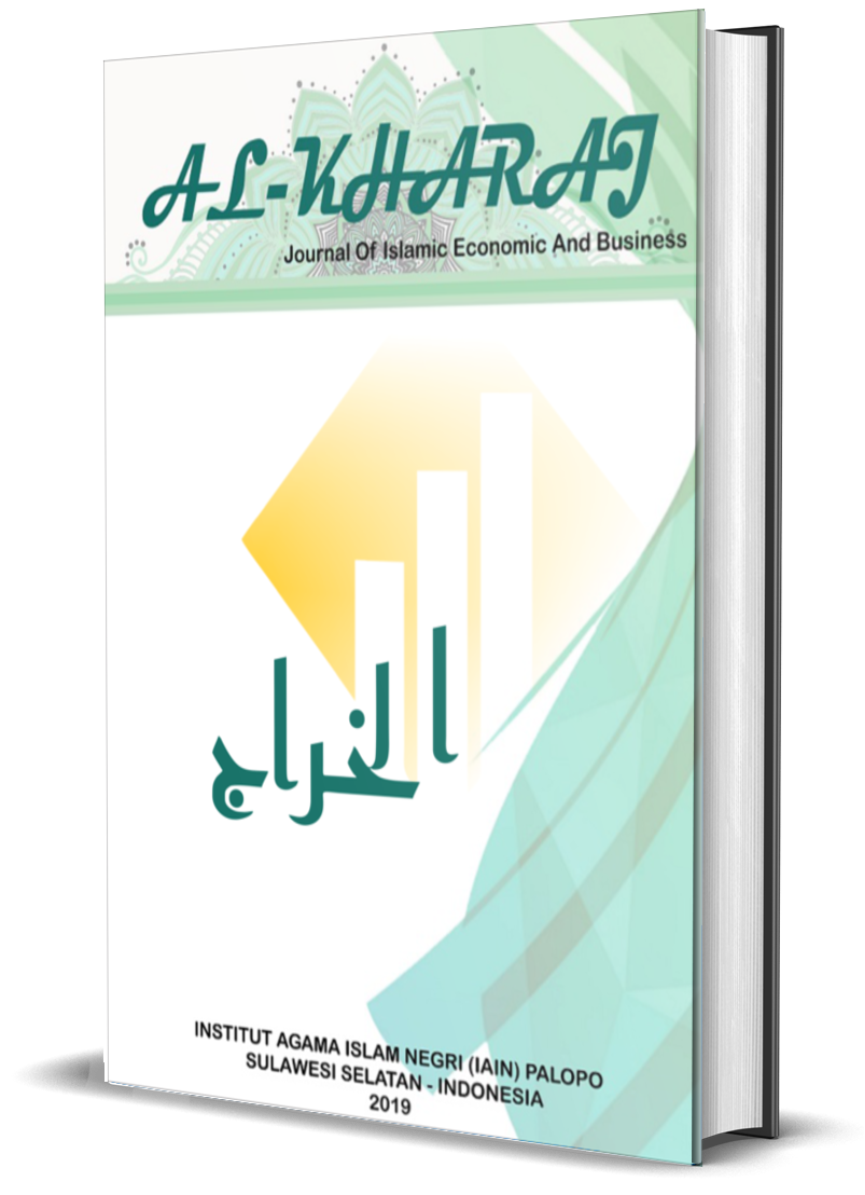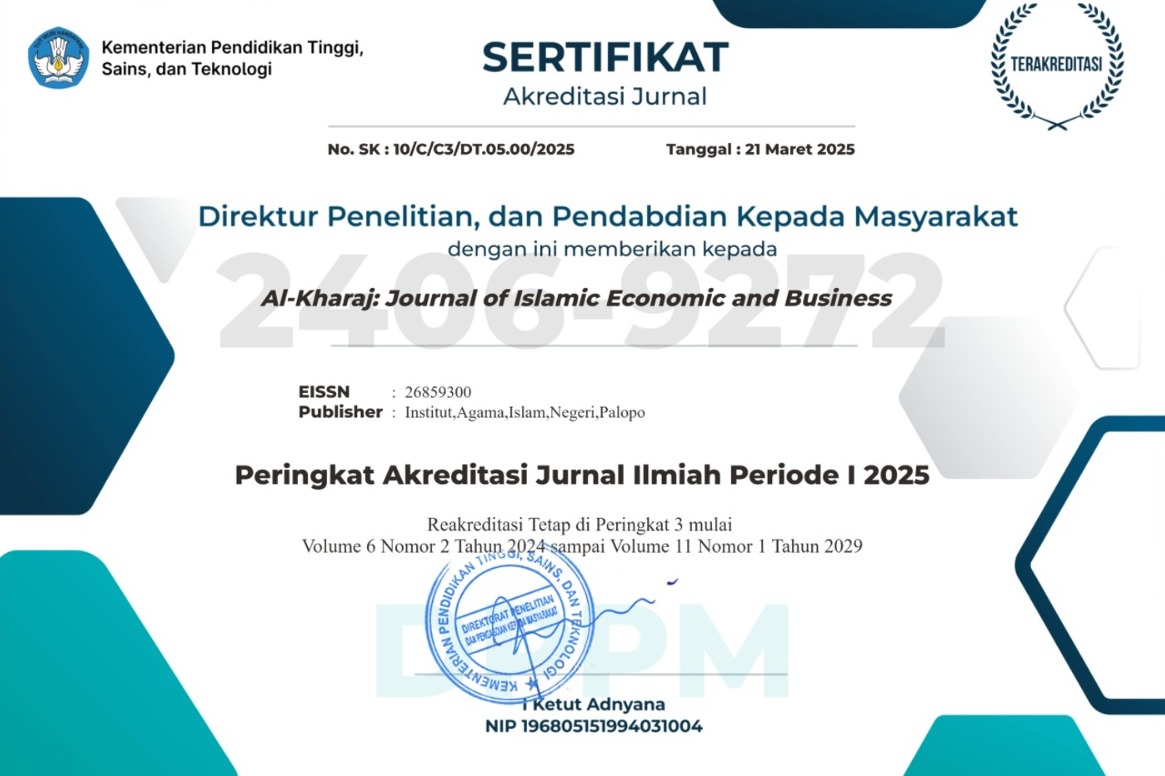The Economic Impact of Pesantren Haul Traditions on Local MSME Income: Evidence from Gentur Cianjur, Indonesia
DOI:
https://doi.org/10.24256/kharaj.v7i4.8113Keywords:
Pesantren Gentur; haul tradition; MSMEs; local income; SEM-PLSAbstract
This study aims to analyze the effect of pesantren haul traditions on the income growth of local micro, small, and medium enterprises (MSMEs), with a case focus on Pesantren Gentur in Cianjur Regency, Indonesia. The haul tradition is viewed not only as a religious activity but also as a socio-economic phenomenon that has a significant impact on the surrounding community. A quantitative approach with an explanatory design was employed. Primary data were collected through surveys and interviews with 111 MSME actors around Pesantren Gentur and analyzed using Partial Least Squares-Structural Equation Modeling (PLS-SEM) with SmartPLS software. The results reveal that the pesantren haul tradition has a positive and significant effect on MSME income growth, with a path coefficient of β = 0.843, T-statistic = 27.710, and p < 0.001. The structural model explains 71% of the variance in MSME income growth with a substantial effect size (f² = 2.451) and strong predictive relevance (Q² = 0.593). These findings confirm that pesantren haul functions not only as a spiritual event but also as a local economic driver. The implications suggest that better management of haul traditions is essential to optimize economic benefits for MSMEs without diminishing their religious values. Local governments and pesantren managers are expected to synergize in supporting infrastructure, event governance, and MSME empowerment. Future studies are recommended to expand the scope to pesantren in other regions and to integrate variables such as MSME digitalization to enrich the analysis of religious tradition-based economic development.
References
Andrade Suárez, M. J., Docampo García, M., & Leiras, A. (2025). Researching links between pilgrimage tourism and rural development: The emergence of Fisterra as a “new end” of the way. Journal of Rural Studies, 119(May). https://doi.org/10.1016/j.jrurstud.2025.103721
Assa’idi, S. (2021). The growth of pesantren in Indonesia as the islamic venue and social class status of santri. Eurasian Journal of Educational Research, 2021(93), 425–440. https://doi.org/10.14689/EJER.2021.93.21
Budovich, L. S. (2023). The impact of religious tourism on the economy and tourism industry. HTS Teologiese Studies / Theological Studies, 79(1), 1–7. https://doi.org/10.4102/HTS.V79I1.8607
Duryadi, M. S. D. (2021). Metode Penelitian Empiris, Model Path Analysis dan Analisis Smart PLS. Semarang: Yayasan Prima Agus Teknik, STEKOM.
Felicity, N. N., & Chikuta, O. (2020). Perceived economic impact of religious tourism: The case of Zimbabwe. Hospitality & Tourism Review, 1(2), 1–13. https://doi.org/10.38157/hospitality-tourism-review.v1i2.211
Guriţă, D., & Scortescu, F. I. (2023). Religious tourism and sustainable development of the economy in the context of globalization in the Northeast area of Romania. Sustainability, 15(16). https://doi.org/10.3390/su151612128
Hair, J. F., Hult, G. T. M., Ringle, C. M., Sarstedt, M., Danks, N. P., & Ray, S. (2021). Partial least squares structural equation modeling (PLS-SEM) using R. Springer.
Haryono, S. (2016). Metode SEM untuk penelitian manajemen dengan AMOS LISREL Smart PLS. Jakarta: PT Intermedia Personalia Utama.
Palma Balaga, C. M., & Salado Maravilla, V. (2024). Residents’ perceptions of religious tourism and its socio-economic impacts in Brgy. Pomponan, Baybay City, Leyte. Journal of Business on Hospitality and Tourism, 10(1), 315–325. https://doi.org/10.22334/jbhost.v10i1.366
Rahadi, D. R. (2023). Pengantar partial least squares structural equation model (PLS-SEM) 2023. CV Lentera Ilmu Madani.
Rautela, S., Sharma, A., & Panackal, N. (2025). Exploring the sacred-unravelling the growth and development of religious tourism in Islamic culture: A bibliometric analysis. Cogent Business and Management, 12(1). https://doi.org/10.1080/23311975.2025.2482020
Rohmatin, A., Ridwan, E. H., Gandara, T., Permana, D., & Masitoh, I. (2025). Reassessing the influence of teacher role models in student purchasing decisions. International Journal of Applied Finance and Business Studies, 13(2), 319–327. https://doi.org/10.35335/ijafibs.v13i2.401
Rokhadi, R., Sukistanto, S., & Setyawati, H. T. (2025). The impact of the existence of religious tourism on the economy of the surrounding community study on three religious tourism objects in Tuban. Eduvest: Journal of Universal Studies, 5(4), 4321–4329. http://eduvest.greenvest.co.id
Setiabudhi, H., Suwono, M. A., Yudi, M. S., Setiawan, A., Karim, S., Hardani, P., & Duari, H. (2025). Analisis data kuantitatif dengan Smart PLS 4. Borneo Novelty Publishing.
Downloads
Published
How to Cite
Issue
Section
Citation Check
License
Copyright (c) 2025 Diansyah Permana, Luqman Al-Hakim Musthafa, Ceceng Saepulmilah, Mamat Rahmat, Andewi Suhartini, Alfa Rohmatin

This work is licensed under a Creative Commons Attribution-ShareAlike 4.0 International License.
Authors retain copyright and grant the journal right of first publication with the work simultaneously licensed under a Creative Commons Attribution-ShareAlike 4.0 International License. In line with the license, authors are allowed to share and adapt the material. In addition, the material must be given appropriate credit, provided with a link to the license, and indicated if changes were made. If authors remix, transform or build upon the material, authors must distribute their contributions under the same license as the original.









